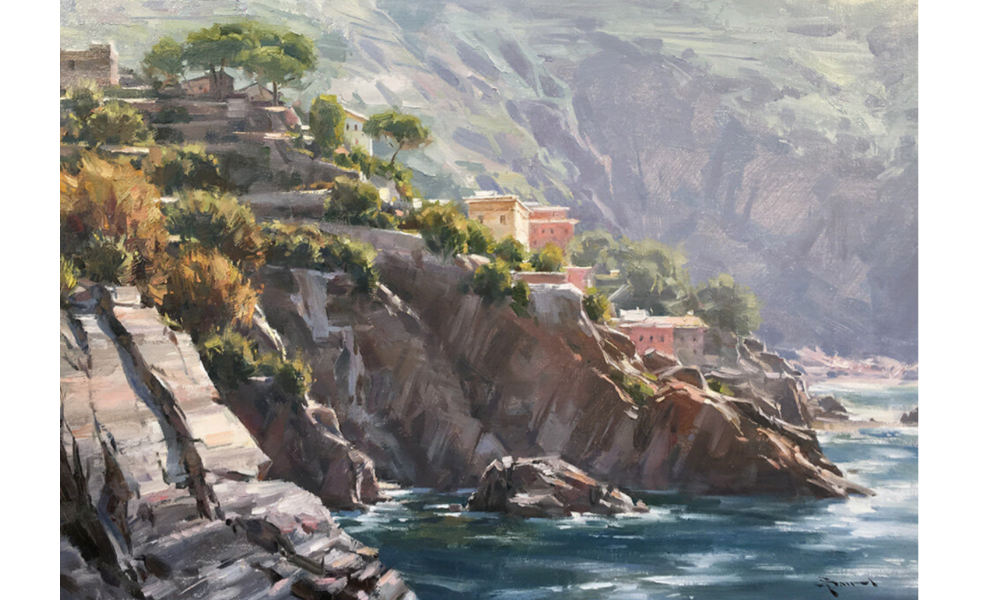Lighting Your Studio
featuring Mitch Baird
Studio lighting can be tough, and we all have unique situations with it. Mitch Baird has a small studio (16 by 16 space) with about has 8 foot ceilings. This is a standard studio scenario. His natural light source is one window and two French doors that are north facing. He has a strong cool light that comes in from one side. With the 8 foot ceilings, he built a track light system that runs like a U shape over his easel and then runs back away from him to face the easel on each side. The top of the U is right over the easel. He did this so he could have two 45 degree angle lights coming in from right and left to kill the glare.
Too many artists think they need light directly on the canvas, but we actually need ambient light for painting. With the track lights above Mitch’s easel, he added on some longer armed click -in lights that come away from the ceiling about 5 or so inches. He has two that turn straight up so they bounce light back down onto his easel. This way, he has light bouncing off the ceiling giving him ambient light. Then, he has the two lights at 45 degrees on the left and right. One side sets on his easel and one side down onto his palette. This way, he does not get too much cross shadow. Ambient light fills in those cross shadows.
The last time Mitch had a show in a gallery, the lighting was very different. Mitch has been using warm LED. But, the last gallery he went to had cool lighting and his paintings looked so much different than the painting he created and saw at the studio. Natural light is ideal, but when we show our work, we have to be aware of what our painting will look like in these different environments. He had to bring in some cool and warm bulbs so he can see what his paintings look like with both. He has enough cool light coming in the French doors during the day, but at night it disappears. As soon as night falls, Mitch won’t touch that specific painting again until the morning. You aren’t seeing color the same if you use multiple light sources for one painting, so you need to be consistent. Otherwise, the painting could be completely different when the cool light comes back the next day.
“Too many artists think they need light directly on the canvas, but we actually need ambient light for painting.”
In Mitch’s studio, those track lights he spoke about are about 6 to 8 feet long across the front. They are a good 3 feet on each side, so quite a ways away from the painting. If you do have to set light up in your studio, be sure you do it so the light isn’t a spotlight but more of an ambient light. Balance it out far enough from your easel. Mitch is finding out he needs to balance warm and cool light because of that gallery experience.
Want more tips like this from a mentor like Mitch? The time is now! Join Mitch in his next open enrollment for his mentoring course, “Painting with Perception:”
To listen more on topics like this, join Gabor and artists like Mitch on the Paint & Clay Podcast here.


